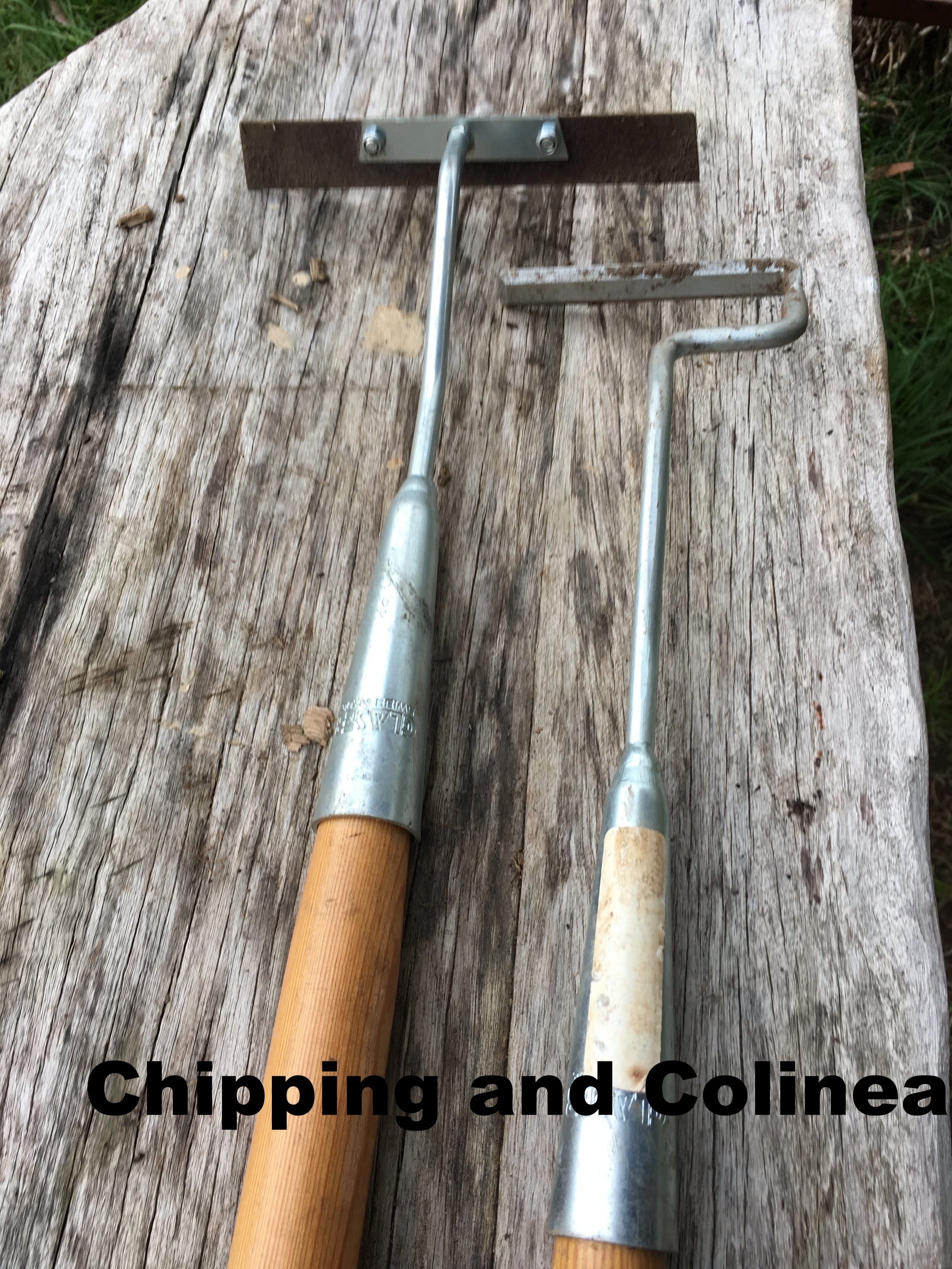Bed maintenance and growing strategies
We use four planting strategies; Two are by direct seeding and two by transplant. All of the strategies are based on the idea of having maximum plantings in the bed for continuity of regenerative soil relationships between the plants and the soils living food web
direct seeding
We direct seed crops that either cant be transplanted such as carrot, beetroot*, spring onions* (sometimes referred to as dirty crops) or we wish to grow as a dense intensive crop (such as baby leaf lettuces, spinach or kale, Mizuna, Tatsoi etc) for harvesting purposes. These crops MUST be 'stale bed' prepared to greatly reduce weed pressure by first preparing with broadfork, and incorporating fertiliser then left bare for ten days to two weeks for weed seed germination before flameweeding
Following our 'stale bedding' weed management we plant or crops either with seed or transplants
Dirty crops: When direct seeding dirty crops we plant as many rows as we can without affecting the growing space, eg 5 x carrot rows in our 750mm permabeds. We use the Jang single row seeder ‘JP-1’ for this and allow a distance between rows based on the diameter of Stirrup or Wire Hoes
Hoes
We use mainly Stirrup or Wire Hoes in our system. Neversink Farm Tools and Terrateck make a range of both types of these hoe sizes for different bed spacing as well as wheel hoes, basically the same hoe with a supporting wheel, the wheel platform allows for a variety of configurations well worth checking out
Stirrup hoes are primarily used to follow up on baby weeds after planting and are highly efficient if timed well. The stirrup is a blade that cuts/severs the young monofilament roots, this needs to be done regularly as part of an ongoing strategy. It is a fast and time,resource efficient system
Highly effective and versatile designs, all are an important part of weed management strategy for urban microfarming. Available from our online store, www.ActiveVista.com.au or from our farm shop ‘Here On Earth’
* The recent Paperpot transplanter now allows a variation as we can easily transplant beetroot, spring onions, parsnip and the paper also protects the upper area of root development allowing fast and accurate stirrup hoeing without damaging precious young roots
Intensive crops: We direct sow intensive crops like baby leaf very close, 11 or 12 rows per 750mm permabed. As with many plantings in our system we want the plants to cover the bed at two thirds of their growth, so touching the neighbouring plant and shading out potential weeds. It is critically important that we have stale bedded properly so we get a clean harvest
Transplants
Where possible we use Transplants so we have already developed root systems/ plants that can quickly take up the space. This has two main benefits;
1; Constant relationship with roots and soil, allowing a healthier soil food web and maximizing time for plants to exude stored energy to soil microbes.(liquid carbon pathway). See Soil Health
2; Less time between crop productivity
We aim to transplant when roots have sufficiently filled the cells in the transplant flats. This can be from 3 - 5 weeks depending on cell size and plant type. Typically small cells are good for alliums as it is easy to remove them (128 cell trays) Lettuces prefer a larger cell 25-30mm diameter (72 cell trays) and Solanacea and Curcubits (tomatoes, zucchinis etc) require a bigger cell (50 cell trays or small pot) to allow up to seven weeks growth undisturbed. We raise our early transplants in polytunnels and take them outside, often shaded for 3- 7 days to harden off prior to planting
Another benefit of transplants generally is that we are able to use them in conjunction with a reusable film such as Weed Gunnel. This is perfect for most heavy feeders like eggplant, tomatoes, cucumber, zuchinni, and whole head lettuces like Salanovas as well as large brassicas, cabbage etc. This is a major part of our weed strategy as the following year (for heavy feeders) or following crop (for light feeders) we remove the film (Weed Gunnel) and have little weed contamination to worry about for the following season, in this case light feeders, often without any cover eg dirty crops or intensive/dense leafy greens
Green manure/cover crops
As part of our soil health strategy we follow up after growing aliuls with a cover crop, this ensures that every four years every bed has had a complete rotation of crops followed by a cover crop.When planting our cover crop (green manure) we try to plant 5 plant groups. legumes, clover, grasses, brassicas, chenapods (beet family). We try to use part rape seed not canola as it has a larger root system and soil interaction.
We grow the cover crop to it's tertiary stage to just pre seed production stage in order to maximize plant exudation and hence soil/microbial rebalancing.
At this stage we finely cut the green manure with a Berta Flail mower on our BCS walkbehind tractor as it leaves the material where it is cut for bed composting. (could be done with a slasher or mower), problem is keeping all the material in the place it was cut and not flying elsewhere.
At this time we cover the block of allium beds with a silage pit cover. Not cheap, pit cover will last ten years or more and is integral to our management strategy. Costing about $900/roll it is 12 metres x 50 metres so will cover a ten permabed block. Ours are 15 metres so we get three blocks to a roll (cut at 16.3 metres)
Silage Film/ Pit Cover (UV stabilised)
Food grade film to cover ten permabeds (15m width) for winter weed suppression, post green manure crop. Will last many seasons. Available from our online store ActiveVista, and Here On Earth (Tasmania)






